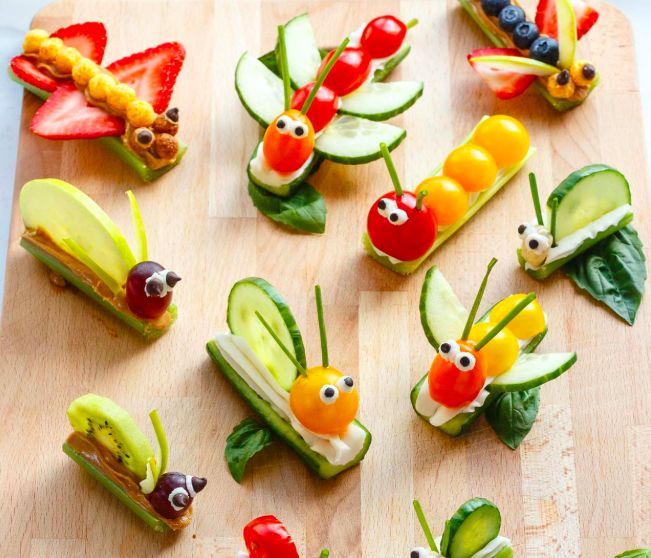langerhanscellhistiocytosis.org – Getting kids to eat their fruits and vegetables can sometimes feel like a battle, but it doesn’t have to be that way. With a little creativity and fun, you can turn mealtime into an adventure that encourages your little ones to try and enjoy a variety of healthy foods. Here are some innovative and enjoyable ways to get kids excited about eating fruits and veggies.
1. Make It a Game
Turning eating fruits and vegetables into a game can be a great way to get kids interested. You can create a “vegetable tasting” game where you blindfold your child and ask them to guess the vegetable they’re eating based on its taste and texture. Or, you can set up a “fruit and vegetable hunt” where kids have to find hidden pieces of fruit and veggies around the house or garden.
2. Get Them Involved in Cooking
Kids are more likely to eat something they’ve helped to make. Involve them in the cooking process by letting them wash, chop, or mix ingredients. You can make fruit skewers together, bake a vegetable pizza, or even create a salad with their favorite veggies. This hands-on approach not only teaches them about food preparation but also makes them more enthusiastic about trying new things.
3. Presentation Matters
The way food looks can have a big impact on how appealing it is to kids. Get creative with your plating by making smiley faces with slices of cucumber and tomato, or arrange fruits and vegetables in colorful patterns on their plates. You can also use cookie cutters to make fun shapes out of sandwiches with vegetables or fruit slices.
4. Smoothie Time
Smoothies are a fantastic way to sneak in extra servings of fruits and vegetables. Blend up a mix of leafy greens, like spinach or kale, with some fruit for sweetness, and serve it in a fun cup or with a crazy straw. Kids love the novelty of drinking their veggies, and you can experiment with different combinations to find their favorites.
5. Create a Fruit and Veggie Chart
Make a chart that lists all the fruits and vegetables you want your kids to try. Every time they eat one, they can put a sticker next to it or color it in. This not only encourages them to try new things but also helps them feel a sense of accomplishment as they work through the list.
6. Theme Days
Designate certain days of the week for specific fruit or vegetable themes, like “Mighty Monday” for broccoli or “Tasty Tuesday” for berries. This can make meal planning more fun for you and adds an element of anticipation for your kids.
7. Use Dip to Your Advantage
Sometimes, all it takes is a tasty dip to make fruits and vegetables more appealing. Offer a variety of dips like hummus, yogurt-based dressings, or even a simple peanut butter dip for fruits. Kids can dip their fruits and veggies, making the eating experience more interactive and enjoyable.
8. Grow Your Own
If you have the space, involve your kids in growing their own fruits and vegetables. Whether it’s a small herb garden on the windowsill or a larger vegetable patch in the backyard, watching plants grow from seeds to something they can eat is a rewarding experience that can increase their interest in trying new foods.
9. Make It a Story
Create stories around the fruits and vegetables you’re serving. For example, you can tell a tale about how the broccoli is a little tree that needs to be eaten by a “big, strong dinosaur” (your child) or how the strawberries are jewels that need to be collected by a brave knight. This playful approach can make eating more engaging.
10. Be a Role Model
Kids learn by example, so make sure you’re eating plenty of fruits and vegetables yourself. Show enthusiasm for trying new things and talk about how good they make you feel. Your positive attitude towards healthy eating can be very influential.
Incorporating these creative strategies into your daily routine can help make fruits and vegetables a more integral and enjoyable part of your child’s diet. Remember, the goal is to make eating healthy fun, not a chore, so keep experimenting until you find what works best for your family.

